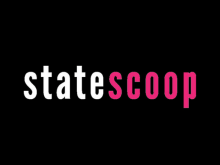
Fast, affordable Internet access for all.

A recent edition of State Scoop published Christopher's thoughts on the state of competition in the broadband market in the United States. In the piece, Christopher argues how incumbent Internet Service Providers translate their economic power into political power, as seen in the recent vote to strike down consumer privacy protections. He also more widely distributes our recent infographic, "The Market Has Spoken. The Market Is Broken." We've reproduced the op-ed here:
Infographic & commentary: Christopher Mitchell of the Institute for Local Self-Reliance says the new anti-privacy legislation passing through Congress offers further evidence that America's broadband market is broken, but not beyond repair.
To be charitable, one of the reasons that Republicans in Congress moved so quickly to eviscerate privacy protections for internet access subscribers was an overriding belief that the market provides better protection than regulators. To be less charitable, it is possible all the lobbyist contributions to their campaigns had an impact.
But the market is not providing a check to AT&T or Comcast power. They are effectively monopolies — and as we just saw — can translate their market power into political power to wipe out regulations they find annoying.
At the Institute for Local Self-Reliance, where we work to support local economies, this broken market is a major problem. Cable monopolies are bad for local businesses, which become less competitive from paying too much for unreliable Internet access. Communities cannot thrive without high quality Internet access today.
So we created the infographic below, which offers evidence for our claim that the market is broken. The Federal Communications Commission has documented that most households don’t have a choice in broadband providers, let alone a meaningful choice (where you actually like one of the companies you have to choose between).
Despite widespread dissatisfaction, the revenues of the biggest companies keep growing, offering another data point that most people really don’t have a choice in providers.
We even discuss why creating competition in the face of all this subscriber dissatisfaction is very difficult.
But most importantly, we offer some hope for a world with choice and how to get there. Hundreds of local communities have made smart investments and created smart policies to create a meaningful local choice. Whether urban or rural, there are options and we highlight a few of them.
We are living in an age of monopoly and the federal government is currently on the side of the monopolists. We can make a difference locally with some smart investment, but only if more people get involved – whether to join a committee, create a movement, or simply writing to elected officials to demand they take action.
Get a larger version of the infographic here.

Get a larger version of the infographic here.
Kudos to intern Kate Svitavsky who created the infographic. View the original piece in State Scoop, here.
